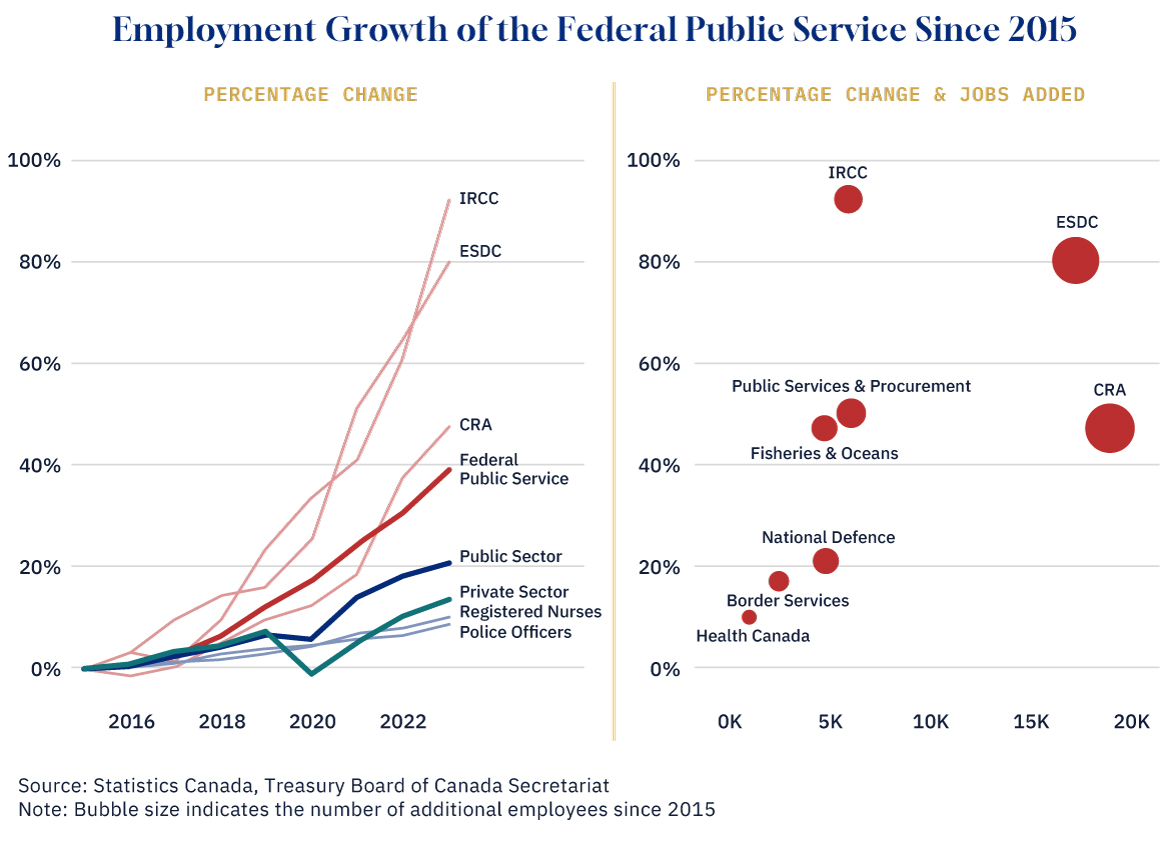Employment in the public sector has grown considerably over the past decade and, in particular, since 2020.
Of course, Canada’s population is growing and aging, so you might imagine this growth reflects an increased need for essential jobs like nurses, teachers, and police officers. Is that what’s driving the expansion of the public service?
It turns out employment growth in those occupations—specifically, registered nurses, public school educators, and police officers—has been fairly modest over this time and has even failed to keep pace with Canada’s population.
Instead, the segment of the public sector that has seen the fastest growth is actually the federal public service—bureaucrats who work for federal government departments. This includes jobs in ministries like Health Canada; the Canada Revenue Agency; and Immigration, Refugees and Citizenship Canada (IRCC).
Since 2015, employment in the federal public service has increased by an astounding 38.9 percent. This is more than quadruple the growth of nurses, teachers, and police officers, and almost triple that of the private sector over that same period.
Looking at some of the major departments of the federal public service (those with over 10,000 employees as of 2023), we can see which of them have been driving this increase.

Graphic credit: Janice Nelson.
Interestingly, two of the biggest departments also saw the fastest jobs growth. The Canada Revenue Agency—which was and remains the biggest department—grew by almost 50 percent, adding almost 19,000 jobs, while Employment and Social Development Canada—also a large ministry—increased its staffing by 80 percent or more than 17,000 jobs.
IRCC, though not as big as the other two, saw the fastest growth of any major department over this time. It doubled its staffing from just under 6,400 employees as of 2015 to around 12,250 more recently.
Meanwhile, other major departments added fewer jobs. In fact, some, such as Correctional Service Canada (5 percent) and Health Canada (10 percent), are barely larger than they were nearly 10 years ago.
While there is a range of possible reasons for the surge in federal public service jobs, the fact that growth has so vastly exceeded private sector job gains is a concern. A strong private sector allows for a strong public sector—having the latter without the former simply isn’t sustainable.










